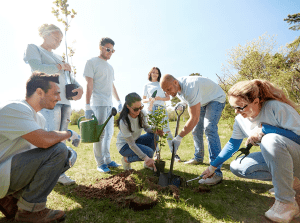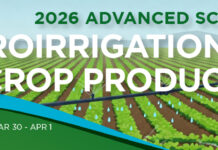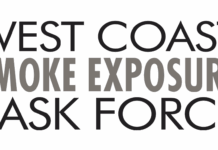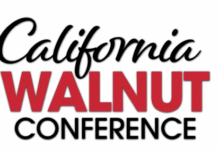
When thinking about sustainability, people often focus on environmental practices. Heightened concerns over resource issues such as water quality and availability, greenhouse gas emissions and soil nutrient depletion have inspired consumers to seek out businesses that use practices that are less demanding on and harmful to our blue planet.
While combating climate change and environmental degradation are certainly good enough reasons to support sustainable agricultural systems, many consumers will be pleasantly surprised to learn that sustainability goes beyond protecting the ecosystem. Sustainability puts a heavy emphasis on social equity. If you are wondering what it means for a business to practice social responsibility, look no further than the sustainable winegrowing industry.
The sustainable winegrowing community knows that people are our most valuable resource. Within the business, this includes the people who plant, care for, harvest, crush, ferment, bottle and pour the wine. Outside the business, it means the larger social systems in which the business exists, including neighbors and communities. Sustainable winegrowers put conscious care into protecting human resources.
In the eyes of many Americans, being a good employer is one of the most important attributes of a responsible company (Cone Communications 2017). Sustainable winegrowing businesses invest care and resources into their workforces by offering fair wages and benefits, safe and ethical working conditions, regular safety trainings, opportunities for education and emphasizing diversity and inclusion in their hiring processes. By creating an environment that encourages wellbeing and development, these companies foster strong, dependable workforces.
77% of consumers are motivated to purchase from companies committed to making the world a better place (Aflac CSR Survey 2019). There are several ways a business can use its resources to give back and in turn support the people and communities who make its success possible.
Sustainable winegrowers stay engaged and in tune with their communities by creating communication plans and participating in community forums. They give back to their communities through charitable donations including volunteer time and funds to local organizations. Many brands invite communities to their farms to participate in events designed to educate the community on resource issues and sustainable farming practices. Consumers can support these virtuous endeavors by choosing to shop their values and buy from a business that does good.
All of this is great news for the nearly 46% of U.S. regular wine drinkers who say they will always choose a sustainable wine when given the choice (IWSR 2022). The mindful shift toward supporting sustainable businesses and products has been observed over the past several years (Simon-Kutcher & Partners 2021; NielsenIQ 2021). IWSR’s latest findings from tracking consumer interest and attitudes toward alternative wines shows that the proportion of regular wine drinkers who are even willing to pay more for wine that was made sustainably has significantly increased over the past year (IWSR 2022).
By opting for a sustainably produced wine, wine enthusiasts are enforcing the socially responsible practices that the wine brand engages in. They can enjoy the good feelings that come from knowing they are supporting a company that treats its employees with care and respect and extends their good work to uplift their community.
Conscientious consumers can look for wine labels that showcase their social responsibility right on the label. For example, consumers of Vina Robles’ the Arborist Red Blend can feel good knowing they are helping plant trees with every bottle they purchase of this dynamic red blend.
Socially Responsible Sustainability in Action
In 2017, a unique partnership was formed between Vina Robles, a SIP Certified sustainable winegrower in Paso Robles, Calif., and two non-profit environmental conservation organizations: One Tree Planted and the Arbor Day Foundation. This partnership is a natural extension of the winery’s passion for trees and sustainable viticulture. Vina Robles has created a wine to embody these organizations’ shared belief that planting trees is the key to preserving our planet.
The oak tree depicted on the bottle’s label represents the Legacy Oak, an oak tree that took root on Vina Robles Estate’s Jardine Vineyard over 300 years ago.
The wine itself is dedicated to the winery’s founder, Hans Nef, and is named for the arborist who saved the tree from its declining health in 2014.
The trees planted through this partnership have been planted all around the world. “Our current tree count is over 35,000 trees,” said Alyssa Krichevsky, director of marketing at Vina Robles. “We hope to bring more attention to the work and host our own community event in the future.”
Socially responsible initiatives like Vina Robles’ the Arborist program allow consumers to contribute to a greater cause while they enjoy a glass of wine. This is a win for the brand, consumers and planet.
If your wine business practices social responsibility and other sustainable practices, share this valuable information with your customers. Communicating your business’s care for social issues is a great way to capture the attention of the 70% of consumers who want to know what the brands they support are doing to address social and environmental issues (Certus 2019).
Helping wine consumers understand specific sustainable practices can also increase a winery’s sales (Kathleen Kelley, The Pennsylvania State University, 2021).
In a recent study, two of Pennsylvania State University’s Kathleen Kelley’s colleagues, Michela Centinari and Justine Vanden Heuvel, determined that under-vine vegetation, or cover crops, can prevent erosion and soil runoff, nutrient leaching and excessive vine vegetative growth. Kelley wondered if promoting this sustainable farming practices could be part of a marketing strategy to sell more wine.
To test this theory, Kelley sought to characterize several wine consumer groups that were “likely” to sample wine from vineyards using cover crops. The findings, published in the International Journal of Wine Business Research, found 72% of 956 wine consumers from the mid-Atlantic region surveyed were willing to pay $18.99 for a 750-ml bottle of wine, which included a $1 surcharge to cover associated sustainable production costs including cover crops. Additionally, 26% indicated they would be willing to pay $20.99.

It’s important to note for the participants in Kelley’s study, simply hearing a wine brand acted sustainably wasn’t enough; it was learning the importance of specific sustainable practices that increased customers’ willingness to pay more for a sustainable wine. As Kelley said in her ‘Cover crops make vineyards more sustainable; strategy can be marketing tool’ article, “…in today’s world, sustainability can mean almost anything, and we’re seeing a consumer group that wants to be educated and wants to know exactly what is going on with sustainable wine production. So, being descriptive about what it actually means to include cover crops in a vineyard is a way to be attractive to them.”
We know that the proportion of regular wine drinkers willing to pay more for sustainable wine has significantly increased in the past two years. Vineyard Team’s Executive Director Beth Vukmanic said, “Wine brands have the opportunity to create an emotional connection with their customers by sharing stories about the specific things their brand does to be sustainable and why those practices are important.”
Don’t miss the next issue of the Sustainable Story Series to learn how one Paso Robles winery designed their entire operation to help protect California’s top resource concern: water.










